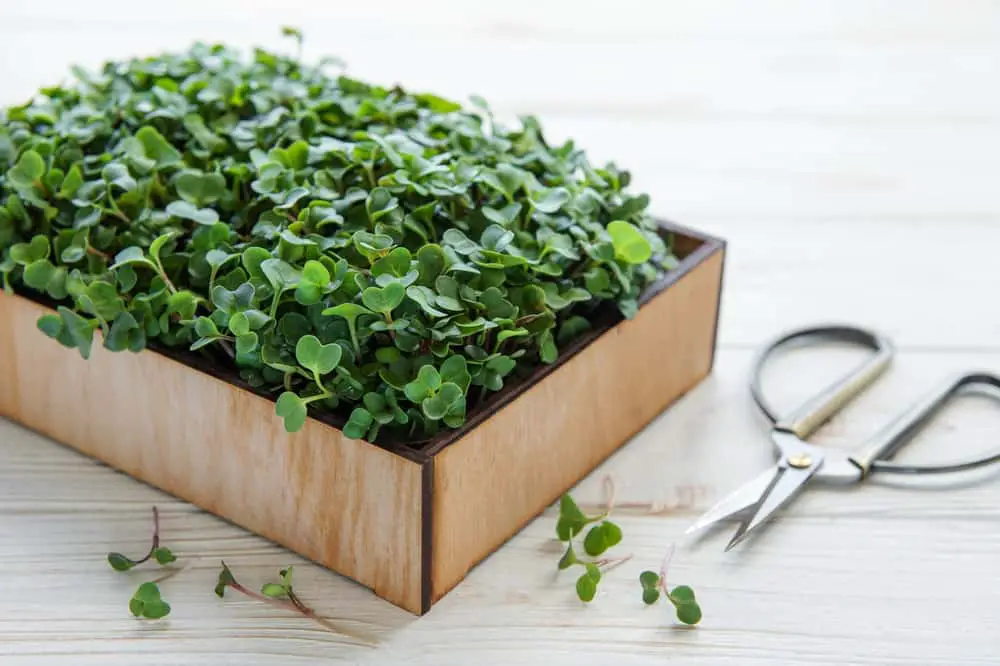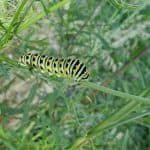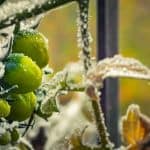Starting plants from seeds can be a rewarding experience as you cultivate a plant from “birth” to maturity.
Did you know that you do not need soil to germinate a seed?
Seeds germinate best when they have adequate conditions of temperature, moisture, air, and light. And in many cases, seeds will germinate better in the dark!
Germinating Seeds Without Soil: Before You Start
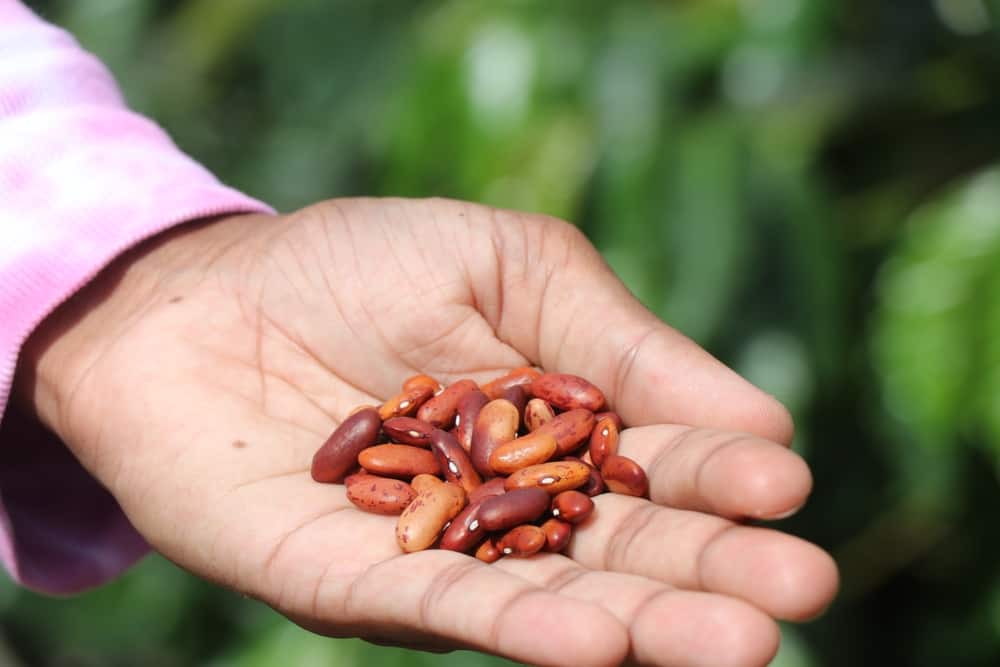
Seeds essentially need a “growing medium” or substrate, which does not need to be soil, at the beginning stages of life.
The seed coat takes in water and eventually, a root will emerge to continue absorbing water.
Once the seeds develop roots and shoots, they are ready to be acclimated to and moved to the soil.
Considerations
Make sure you label what seeds you are germinating as well as the start date.
Take into consideration what type of water is used, the age of your seeds, and the location and temperature needed for germination.
Water
Many gardeners use distilled water to give seeds the best start with clean, chemical-free water. This also helps to deter algae growth.
You may wish to soak your seeds in water for 8 to no more than 24 hours to speed up the process.
Age
Seeds that you have purchased within the year should germinate well. However, anything stored from over a year ago may not germinate.
You can test the seeds’ ability to germinate by wrapping a small handful in a moist paper towel. Keep the paper towel moist for 5 to 10 days.
After time has passed, open the paper towel, and if less than 85% have started to crack open their seed coats and form a root, they are not good seeds.
Location
Choose to germinate your seeds all together in the same location so that they can uniformly start to grow.
This is so that the temperature, lighting, and airflow are generally the same.
Temperature
Seeds have optimal germination temperatures. Refer to the seed packet, your local gardening store or extension, or the Internet for further information.
Here are some examples of optimal temperatures for different seeds:
- Cauliflower: 45°F to 85°F
- Cucumber: 60°F to 95°F
- Pumpkin: 70°F to 90°F
- Spinach: 45°F to 75°F
- Tomato: 70°F to 95°F
9 Ways To Germinate Seeds Without Soil
Here are some methods to germinate seeds without soil. Try several to see what works best for you!
1. Use Paper Towel Substrate In A Tray
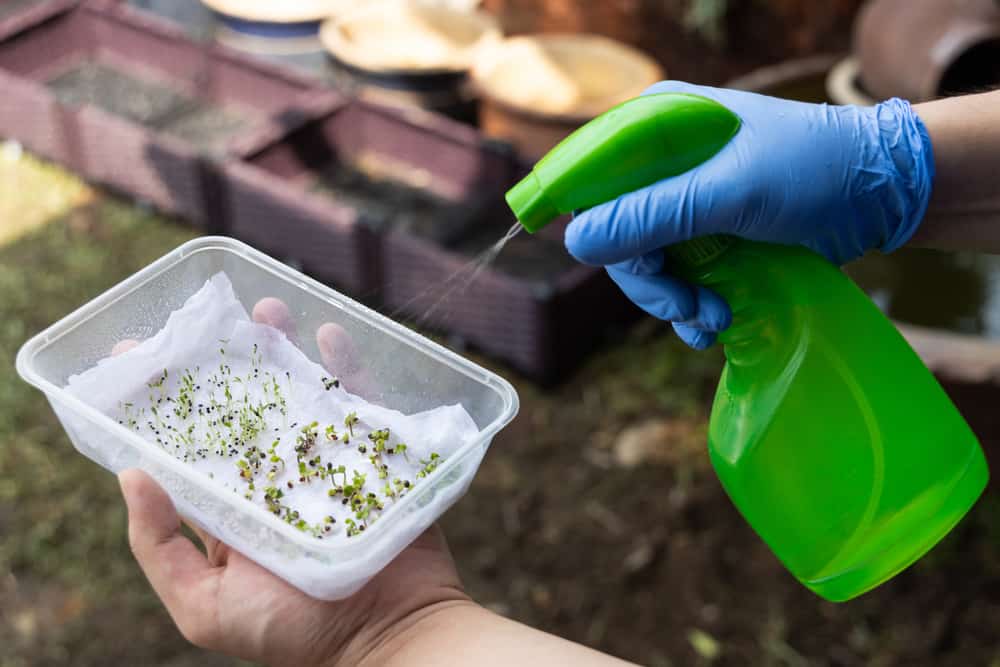
Many seeds germinate well when placed on a moistened bed of paper towels. Keep in mind that some larger varieties of seeds need presoaking, so refer to the seed packet.
Gather a tray that has a clear lid, or you can use plastic wrap instead. The covering over the tray helps to retain moisture.
What To Do
- Line a stack of paper towels at the bottom of the tray.
- Thoroughly moisten the paper towels with water, making sure not to have excess puddling.
- If you have any puddling, pour the runoff out.
- Spread the seeds out evenly over the paper towel substrate.
- Cover the tray with a clear lid or plastic wrap.
- Place the tray in a warm area suitable to the type of seed you are germinating.
- Sunlight is not necessary for all seeds, and if you opt for a warm spot by the window, your seeds may take longer to germinate.
- Check on the paper towel substrate often, keeping it moist with added water.
2. Germinate Seeds In An Egg Carton
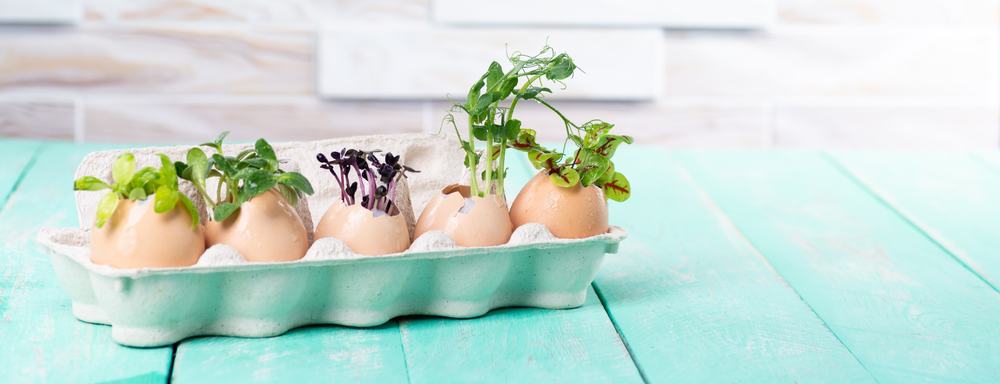
A great way to germinate seeds is to reuse egg cartons or other similar containers that have lids such as a lidded jar.
All you need to do is place bits of paper towel to line the bottom of each “cup”.
Moisten the paper towel beds, but do not allow water to puddle up.
Close the lid and set it in a warm place. Check the paper towels daily to see if they need more moisture.
Tip: If you use a cardboard egg carton, place it on a tray. This keeps water from spreading out onto surface tops. And, if the cardboard breaks down, you won’t drop everything to the ground when you pick it up.
Variation: You can also germinate seeds in the bottom half of an empty eggshell, adding in a moistened substrate. Consider adding the egg shells to your compost pile when the seedlings leave the egg.
3. Fold Seeds Within Paper Towels
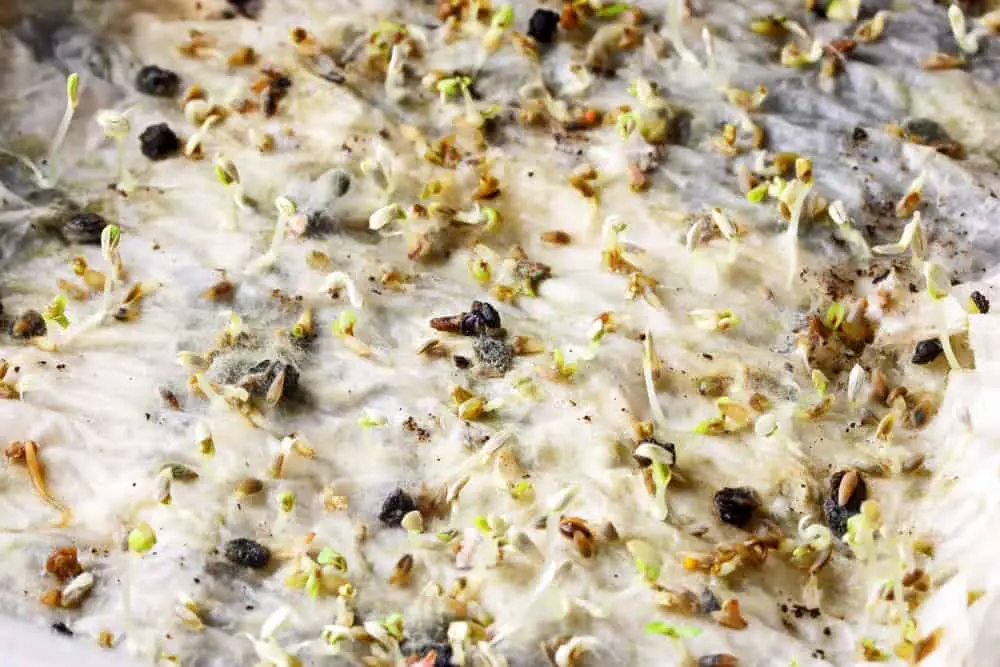
Instead of placing seeds on top of moistened paper towels, you can surround the seeds with them.
You still need a way to retain moisture, so once you have put the seeds inside the layers of paper towels, put them into a clear container.
Use a glass jar or a plastic baggie placed in a warm area.
However, you want the airflow to access the interior still, so lightly put on the lid or leave the plastic baggie partially open.
4. Start Seeds In Homemade Pulp
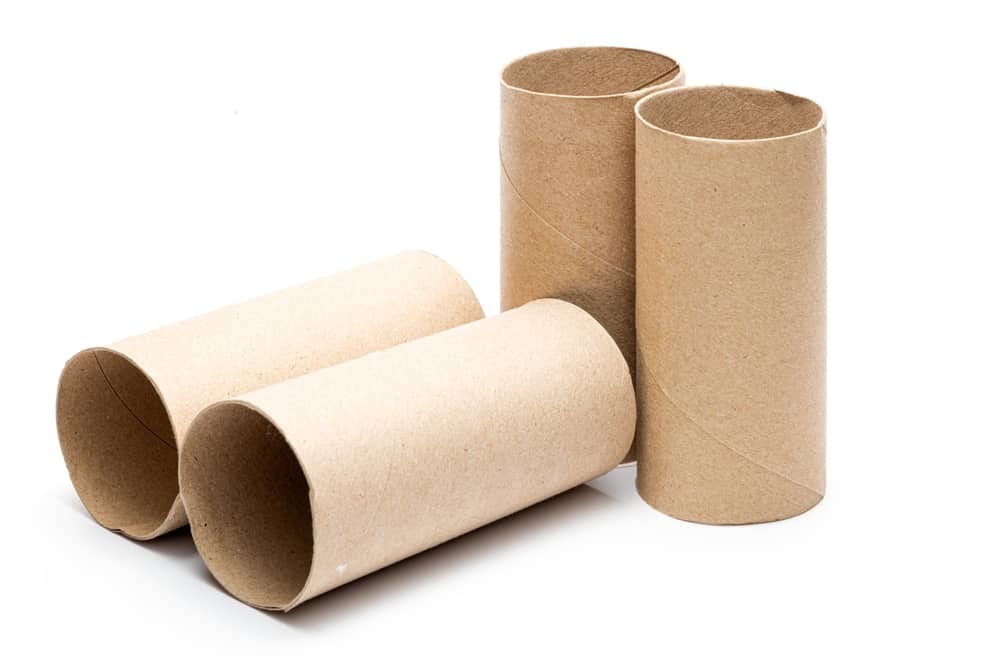
You can opt for more chemical-free seed starts if you’d rather recycle and not use bleached paper towels.
Do not use dryer lint, as this often has chemicals from the clothing as well as laundry detergent remnants.
What To Do
- Gather untreated paper waste materials such as cardboard toilet and paper towel tubes, and cardboard boxes (without labels, dyes, etc).
- You could also use pages from old notebooks, but keep in mind that they may be bleached white.
- Shred and tear these materials up into small bits.
- Soak them in boiling, hot water, letting them sit until they look like mush.
- Strain out the water, pushing down on the pulp to drain it well.
- Then place this substrate into desired containers.
- Follow the same steps as the paper towel methods above, lightly moistening the pulp as needed.
5. Germinate In Natural Fibers
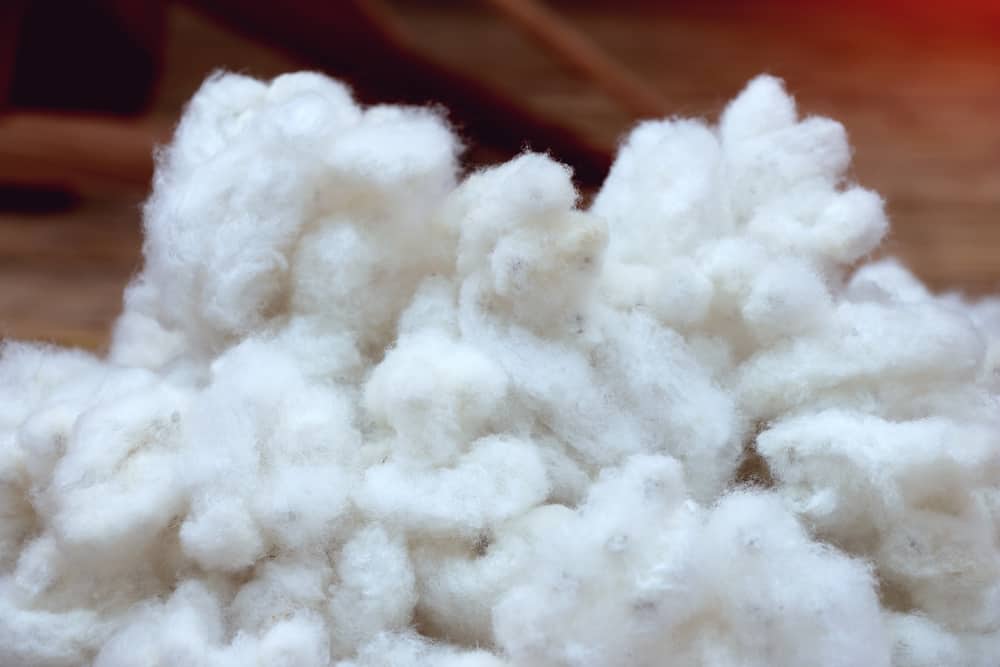
Much like homemade pulp, you can use wool or cotton as a seed substrate.
Hemp or cotton fibers can also be used, and can also be found in preformed mats. Garden stores also sell peat pellets that expand with water.
Opt for organic materials that are free of pesticides, dyes, and other chemicals.
Place the material in a container that can be covered and moistened as needed.
6. Start Seeds On Sponges
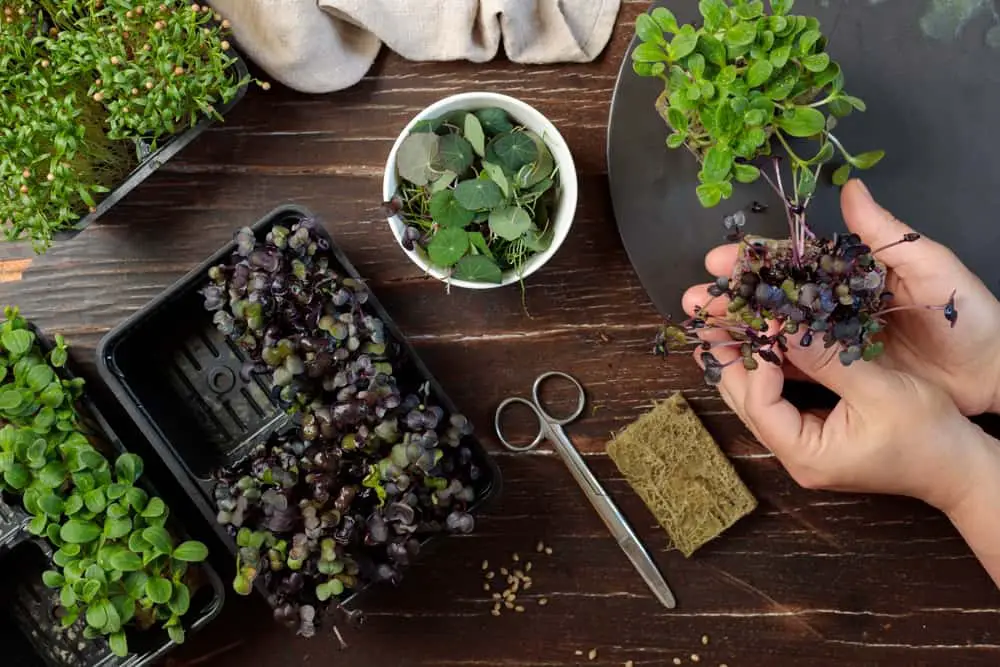
If you can find sponges in bulk, this might be a great way for you to germinate seeds. If possible, use natural sponges.
Sponges, in particular, are excellent at holding onto moisture, giving seeds an ideal moisture-filled substrate.
Place the sponges on a tray, and add water to them.
Place seeds on the moistened sponges, and cover them with plastic wrap or a lid in a warm area.
7. Use Wood Shavings
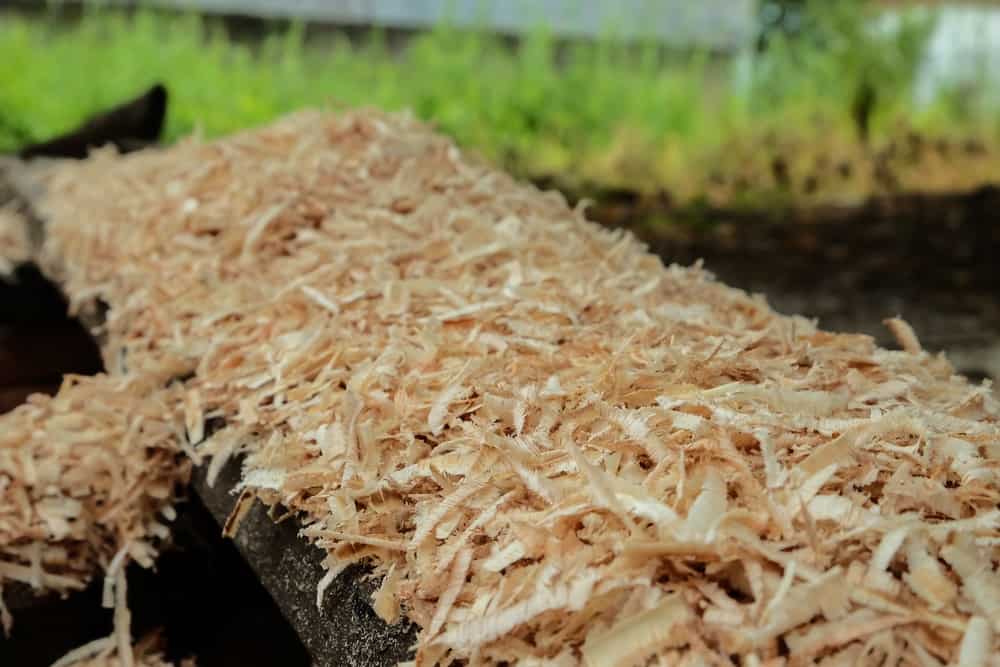
Natural wood shavings are suitable for germinating seeds. You can find these in pet stores since they are often used for bedding.
Put the wood shavings into a covered container of your choice. Keep the shavings moistened and covered once seeds are placed on them.
Wood shavings can be composted after use for germination as well, serving multiple purposes.
8. Seeds In A Bottle
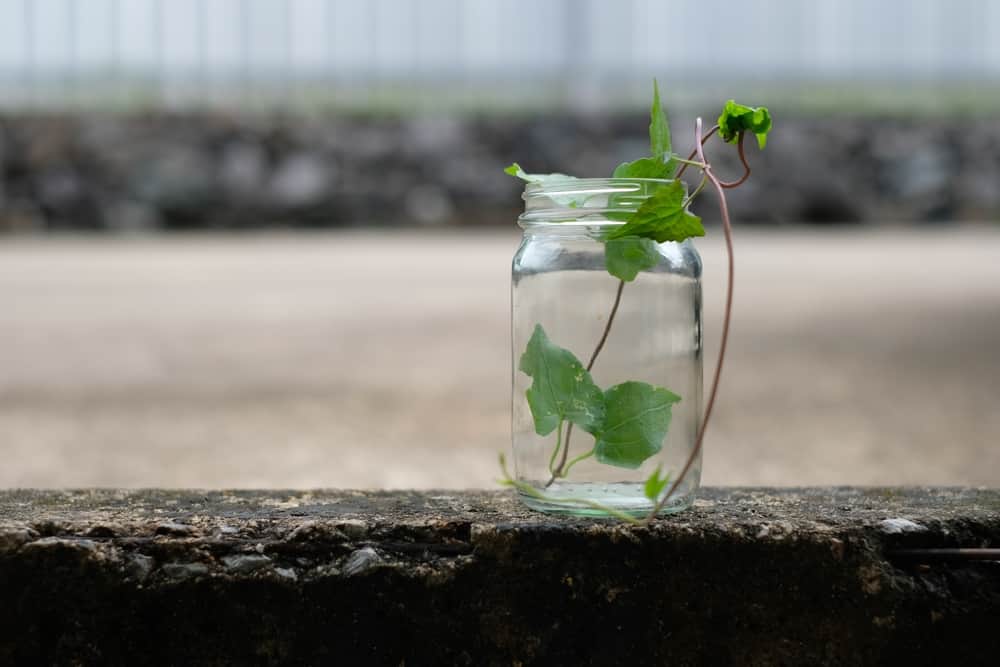
A bottle or glass jar makes an excellent mini-greenhouse for seeds and is a popular option for beginning gardeners and school-aged kids to watch germination in action.
This is similar to many of the processes mentioned above.
What To Do
- Soak a few paper towels in water, and squeeze out any excess.
- Fold seeds into the layers of the mounted paper towels, leaving a small space between each.
- Insert them together into the bottle, pushing the paper towels down to the bottom.
- Put the lid on lightly to allow some air in, while also retaining moisture.
- Place it in a sunny or warm area.
- If the paper towels appear dry, remove the lid and add a few drops of water at a time.
- After 7 to 14 days, remove the paper towels and unfold them to see if they germinated.
9. Germinate Seeds In Sand & Pulp
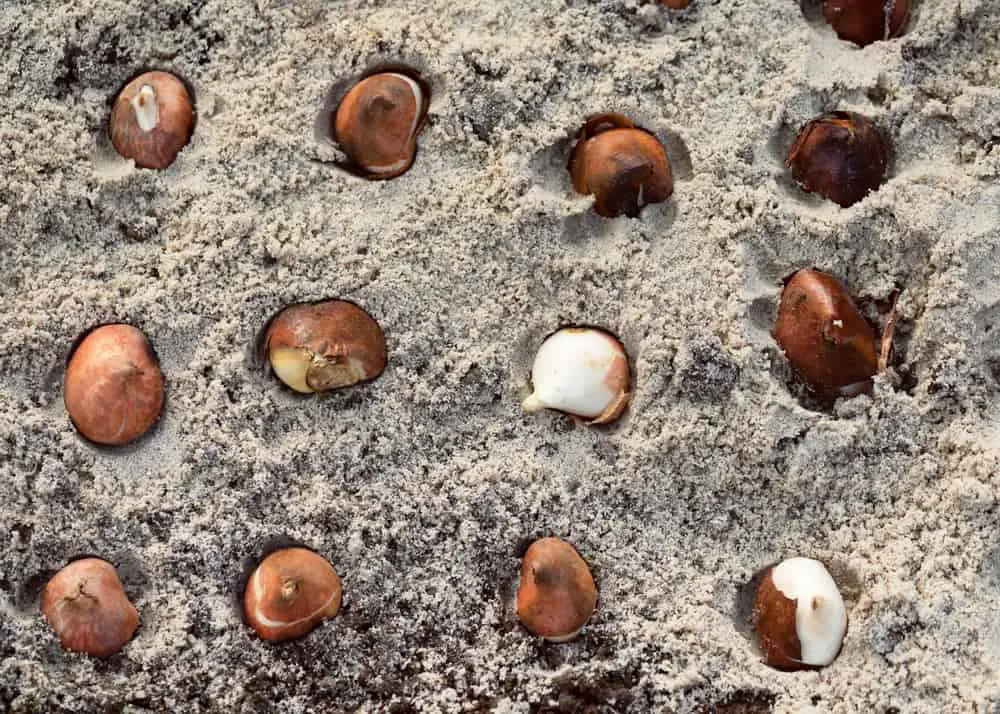
While soil may have sand content in it, you can use sand as a substrate for germinating seeds. It is an excellent substance that drains well while retaining heat.
This method works well if you use egg cartons, eggshell bottoms, or plastic seed trays.
Mix equal parts of pulp or fibers (as mentioned above) with sand. Keep it moist and covered until germination occurs.
Can You Plant Seeds In Soil Without Germinating Them First?
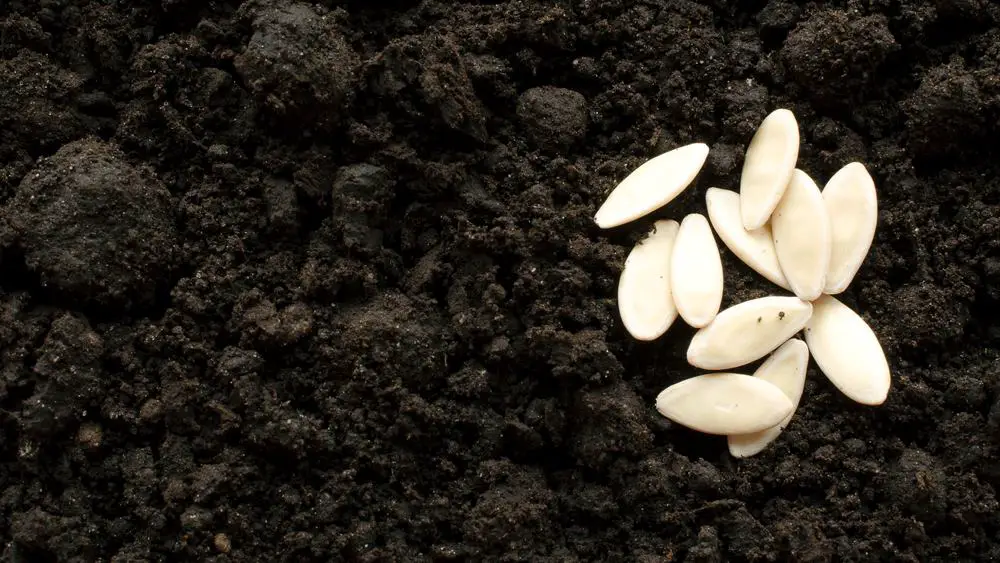
Yes, you can plant seeds without germinating them first. This direct planting in the soil is called “direct sow”. This process may lead to unsuccessful sprouting due to unpredictable elements.
Weather, moisture levels, unclean soil, temperature conditions, insects, disease, and wildlife may negatively impact the seeds’ ability to germinate in the soil.
Seeds typically take longer to germinate outdoors than indoors, so be patient.
Often, germination before planting leads to better growth rates for healthy plants.
If you choose to germinate in the soil you should do the following:
- Soil should be loosely tilled, and amended with nutrients that provide nutrition such as nitrogen, phosphorus, potassium, and calcium.
- Plant seeds during the correct season for their type, to avoid frost or undesirable temperatures.
- Moisten soil regularly, so that the seeds remain moist at all times. Consider putting sheeting over the seeded areas to keep moisture and warmth in.
- Make sure seeds are planted at the correct depth, and in the ideal conditions for their type, such as full or partial sun.

Conclusion
Seeds germinate quite well without soil when they have proper levels of moisture, warmth, and airflow.
You can germinate seeds with a few basic tools such as paper towels and covered containers.
By germinating seeds indoors you give your plants a healthy start to becoming mature and enjoyable plants.
